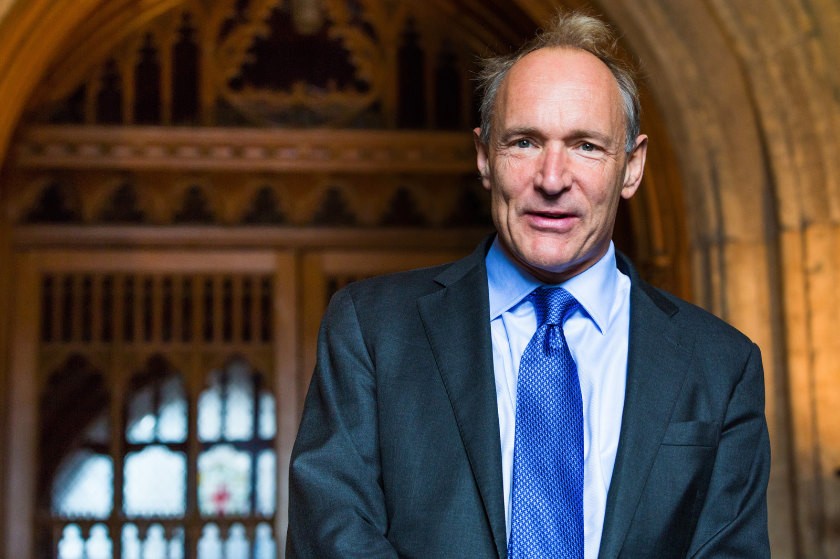
In theory, one of the positive things about social media should be the fact that a company has as much chance of succeeding as an individual. Another is that it shouldn’t matter who you are, you have the same opportunity to get your word out. No one should get special treatment.
But, on Twitter, they’ve come out and said a few very disappointing things over 2017. First is that we’re not equal. President Donald Trump of the US may say odd things regularly, things that Twitter would kick you and me off for, but because it’s ‘newsworthy’, there’s an express policy to let him stay. (Believe me, I’d be equally unhappy if a US Democratic president, or anyone, behaved this way, which goes against basic netiquette. This is nothing to do with politics—as a centrist and swing voter I follow people on the left and the right.)
There are numerous things wrong with Twitter’s position, not least who gets to decide what is newsworthy. Can someone working from Twitter in the US decide if a Tweet of mine is newsworthy in New Zealand? I’m unconvinced. One US news app thought Steven Joyce getting hit with a dildo was of greater significance to us than the death of Martin Crowe, for example.
Secondly, one would have thought their country was founded on the notion that everyone is created equal, but clearly that’s not the case on Twitter. Maybe no one in charge there read their country’s Declaration of Independence (second paragraph, wasn’t it?), and hanker for the days of Empire again. There’s some truth, then, when Silicon Valley is accused of élitism.
More recently, Twitter changed one of its rules. Formerly, it was, ‘We believe in freedom of expression and in speaking truth to power’; now, it’s a simpler ‘We believe in freedom of expression and open dialogue.’ I’ve had to read up on what truth to power means, and as far as I can discern, it is an American term with the meaning of ‘speaking out with your truth to those in power’. That seems a perfectly reasonable position: that if you are going to have a dialogue with someone (in power or otherwise), you should do so with integrity and honesty. To me, the alteration in wording suggests integrity and honesty aren’t needed, as long as the dialogue is open. Perhaps at odds with the author of this rule, I always thought Twitter was open anyway, if you did a public Tweet.
Now I see that Twitter is effectively allowing bots, in the wake of it and Facebook being investigated for allowing bots that might have influenced their country’s presidential election.
I’ve warned about Facebook bots reaching an epidemic level in 2014 and those who follow this blog know how frustrating it has been to have them removed, even in 2017. Facebook’s people tend not to recognize what any average netizen would, which suggests to me that they’re desperate to keep their user numbers artificially high—even after getting busted for lying about them, when researchers discovered there were actually fewer people in certain demographics than Facebook claimed it could reach. (That desperation, incidentally, could be the reason the company lies about malware detection on websites.)
Twitter has had a bot problem from the start, as it’s very easy for someone to create an automated account. They tended not to bother me too much, as I followed back humans. However, now I read that some netizens developed a tool that would identify neo-Nazis, only to have Twitter ban it.
Even under Twitter’s own rules, these accounts impersonate others, at the least by stealing profile photographs from real people. Yet according to journalist Yair Rosenberg in The New York Times today, who said he had received ‘the second-most abuse of any Jewish journalist on Twitter during the campaign cycle,’ Twitter, it seems, is fine with this.
‘These bigots are not content to harass Jews and other minorities on Twitter; they seek to assume their identities and then defame them.
‘The con goes like this: The impersonator lifts an online photo of a Jew, Muslim, African-American or other minority — typically one with clear identifying markers, like a yarmulke-clad Hasid or a woman in hijab. Using that picture as a Twitter avatar, the bigot then adds ethnic and progressive descriptors to the bio: “Jewish,” “Zionist,” “Muslim,” “enemy of the alt-right.”’
The account would then send out bigoted Tweets in order to defame the group of people that their profile photo or name suggested they belonged to.
A developer, Neal Chandra, created a tool to unmask neo-Nazis, and the program went on Twitter to alert people that their discussions had been interrupted by an impostor. However, these accounts began mass-reporting the bot, says Rosenberg, and Twitter ultimately took their side.
This is exactly like Facebook refusing to remove bots and spammers, even after users have reported them. Chandra’s tool does the same thing in alerting people to fake accounts (which, like Facebook’s, steal someone’s image), albeit in automated fashion, yet again fake accounts have won.
I find this particularly disturbing at a time when both companies are being questioned by their government: you’d think they would hold back on tools that actually helped them do their jobs and ensured their T&Cs were being complied with. This either speaks to Twitter’s and Facebook’s sheer arrogance, or their utter stupidity.
These platforms will stand or fall by their stated ideals, and Twitter is genuinely failing its users with this latest.
It really is like someone coming to a company saying, ‘I will solve one of your biggest problems, one that a lot of your customers complain the most about, free of charge,’ and being trespassed from the premises.
I’ve quit updating my private Facebook wall (though others continue to tag me and I allow those on my wall), and I wonder if Twitter is next. I reckon we’ve passed peak Twitter, and going to 280 characters—something I was once told by a Twitter VP would never happen—seems like the sort of scrambling that went on at Altavista and Excite when they realized Google had them beat for search.
I’ve defended this platform because I believe the charges levelled against it by some are unfair: it’s not filled with angry people who want to politicize and divide, if you choose to follow decent ones back. I don’t see much of that in my Tweetstream, and when I do, I might choose to ignore it or, in some cases, unfollow those accounts.
But if Twitter continues to make dick moves with its policies and practices, then we may feel that our values no longer align with theirs.
In 2017, Twitter only really worked properly for 11 minutes.
There’s a lot of work in branding that shows that people choose to support brands that express their values, and that corporate social responsibility is one of the ways to make that connection. Twitter is going the right way in alienating users. Could it be the next one to go, as Mastodon picks up the slack? Sooner or later, one of the alternatives, services which let you keep your identity, something that users are getting increasingly concerned about, is going to get a critical mass of users, and both Twitter and Facebook should fear this.







5 thoughts on “Developer creates a tool to expose bigoted, fake Twitter accounts; Twitter bans it”